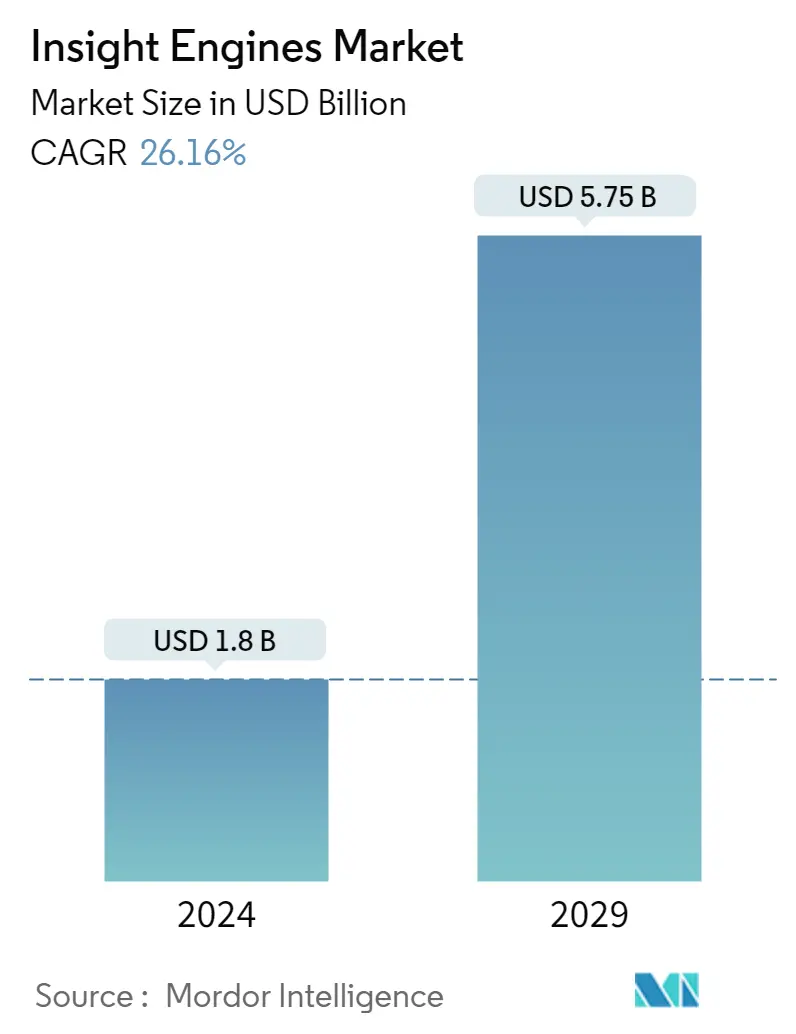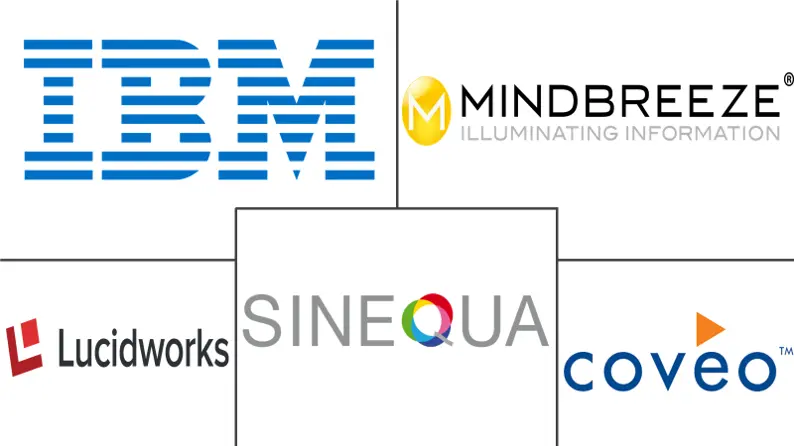Market Size of Insight Engines Industry

| Study Period | 2019 - 2029 |
| Market Size (2024) | USD 1.80 Billion |
| Market Size (2029) | USD 5.75 Billion |
| CAGR (2024 - 2029) | 26.16 % |
| Fastest Growing Market | Asia Pacific |
| Largest Market | North America |
Major Players
*Disclaimer: Major Players sorted in no particular order |
Need a report that reflects how COVID-19 has impacted this market and its growth?
Insight Engines Market Analysis
The Insight Engines Market size is estimated at USD 1.8 billion in 2024, and is expected to reach USD 5.75 billion by 2029, growing at a CAGR of 26.16% during the forecast period (2024-2029).
Insight engines can provide contextual information about the fact or entity in question, unlike the usual search engines that offer links to the original source materials. The key use cases of insight engines include internal search, external search, and extraction of data analytics.
- Even though companies apply all types of data and analytics solutions, they cannot satisfy their business goals. Companies continuously seek better ways to gain more business value from the information. Thus, insight engines address this problem by connecting to varied data sources to deliver business-critical insights. According to Accenture, the amount of data available is growing rapidly, amounting to 44 zettabytes. 80% of this data is unstructured (text documents, audio, video, emails, social posts, etc.), and 20% is held in structured systems of some kind. To gain insights from this massive resource and pinpoint what a user or organization requires, the ability to extract facts from documents and store those facts somewhere for simple access is necessary. Search engine giants, like Google and Bing, do this by storing such facts during a 'knowledge graph,' which suits the search engines they have been using for several years.
- For many organizations, investing in extracting useful insights from data may be costly. For this, they need to possess their own infrastructure and resources. This is one of the main reasons that many companies consider cognitive search an appropriate solution. According to KDNuggets, an information technology, and services company, organizations are expected to direct approximately 15% of their IT investments toward cognitive search, analytics, and other cloud-based offerings. This investment was predicted to extend to 35% by 2021.
- Various end-user industries, such as retail, BFSI, media, and telecommunications, are anticipated to use the insight program in the coming years. For instance, in the BFSI sector, companies are constantly trying to find ways to make banking better, faster, and easier for patrons. This industry plans to use the ability of advanced analytics to derive insights into processes and customers. This will help it know past performances, resulting in better business decisions.
- Furthermore, in the wake of COVID-19, insight engines picked up pace as one of the best knowledge discovery options for enterprise search. The market witnessed a significant rise in data generated by enterprise apps. The time spent on developing meaningful insights to make business decisions also increased significantly. To promote its insight engine during the COVID-19 pandemic, major market vendors launched innovative product offerings with advanced features to cater to industry-specific and post-pandemic search requirements.
- For instance, in July 2020, Microsoft launched a preview feature of text analytics for healthcare, which enables developers to process and extract insights from unstructured medical data. This feature is a part of Text Analytics in Azure Cognitive Services. It processes a broad range of data types and tasks without time-intensive and manually developed custom models to extract insights from data. According to Microsoft, with this latest offering, users can detect words and phrases mentioned in the unstructured text as entities that can be related to semantic types in the healthcare and biomedical domain. These words include diagnosis, medication name, symptoms, examinations, treatments, dosage, and route of administration.
